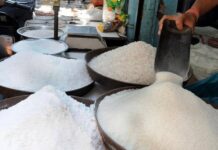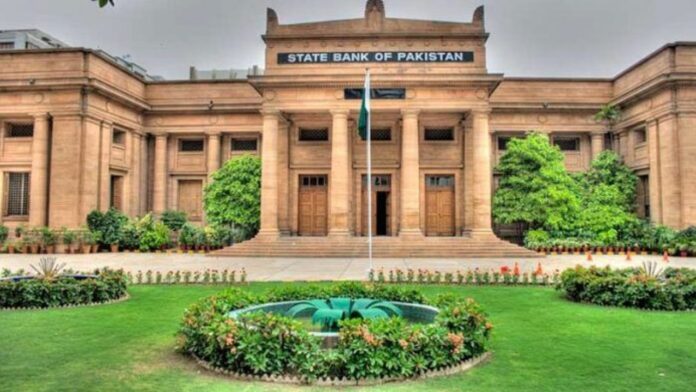In an attempt to flush FX liquidity into the interbank market, the State Bank of Pakistan (SBP) has reduced the Cash Reserve Requirement (CRR) and the Special Cash Reserve Requirement (SCRR) against FE-25 deposits on a temporary basis.
The CRR and SCRR are the ‘reserve’ requirements that a central bank has for any commercial bank. It is one of the tools at the disposal of the central bank help expand or contract economic growth and work by increasing or decreasing total liquidity.
As per informed sources, the quantum of SCRR release is case to case basis so it may vary from bank to bank.
Taking the FX deposits held on May 2022 as per FE-25, a 1% drop in the CRR or SCRR injects $72.88 million into the interbank. Right now the total FX deposits as per May 2022 stand at $7288 million.
To get a slash in the SCRR and CRR, the banks have to ask the SBP.
In addition, the SBP has told the banks that the IMF announcement is expected soon.
Previous cuts in the CRR and SCRR for FX deposits held by banks
In the past, in April 2020, at the height of the pandemic, the SBP slashed the SCRR from 15% to 10% through circular no. 08 issued by the SBP’s Domestic Market & Monetary Management Department.
All conventional banks and development finance institutions will be required to maintain cash reserves in US dollars equivalent to their total FE-25 deposits on a daily basis with the SBP. For Cash Reserve Account ($), the SBP has set it at 5 percent, while for Special Cash Reserve Account ($), it is set at 10 percent. This reduced requirement is expected to temporarily provide a liquidity cushion for banks.
Before that, the combination of CRR and SCRR had been more or less unchanged since 2002. In fact, the SBP only temporarily reduced the requirement, once, in 2007. According to Circular No. 14 released by the SBP’s Banking Surveillance Department in December 2007, the Special Cash Reserve Requirement was brought down from 15 percent to 5 percent.
It was then raised back to 15 percent in June 2008, according to circular No. 14 released by the SBP’s Banking Surveillance Department.
Why is the SBP injecting liquidity in the interbank?
Banks are turning away customers with import transactions due to a shortage of foreign exchange in the interbank, informed sources told Profit on Monday.
This news comes just days after Profit reported exclusively that the interbank market was running out of dollars.
As per informed sources, banks are being told not to give quotes for import transactions by the State Bank of Pakistan (SBP). Sources say only those banks that are receiving inflows from remittances or exports are being allowed to process import payments.
Even as leading commercial banks struggle to process import documents, the State Bank of Pakistan denied giving any fresh instructions to curb imports.
“State Bank has not stopped banks from making import payments,” the SBP said in a statement released on Monday in response to media queries about the issue.
“Even today, roughly about USD 200 million import payments have been executed. SBP has, however, required prior approval before opening of LCs or registration of contracts for certain types of imports like Cars (CKD), cell phone (CKD) and certain types of machinery. But these instructions were issued on May 20 and not today.”
The drying up of dollar liquidity in the interbank market has led to the collapse of forward premiums on dollar swaps altogether as the SBP has not sold dollars in the interbank in a month.
What are the CRR and SCRR?
Central banks have four primary monetary tools for managing the money supply. These are the reserve requirement, open market operations, the discount rate, and interest on excess reserves. These tools can either help expand or contract economic growth and work by increasing or decreasing total liquidity. Total liquidity is the amount of capital available to invest or lend. It’s also money and credit that consumers spend.
The CRR is the minimum percentage of a bank’s deposits that are to be held in the form of cash. It is applicable on demand liabilities and time liabilities with tenor of less than a year. The banks, however, don’t hold this cash themselves. Instead, it is deposited with the SBP. Even though the bank and SBP are separate entities, having the CRR deposited with the SBP is the equivalent of holding cash with themselves. The CRR does not earn interest for the bank.
Essentially, the higher the CRR, the lower the amount that banks can lend. For instance, let’s say a bank’s deposits increase by Rs 100 billion. With the CRR at 6% at present, this means that the bank will put up an additional Rs 6 billion in the form of CRR. The bank can only lend out Rs 94 bn. previously when the CRR was 5%, the bank was able to lend Rs 95 bn.
Through the CRR the SBP is able to control the liquidity in the market by increasing the CRR to reduce the lendable amount. A change in the CRR is harder for smaller banks considering they don’t have as much to lend in the first place. Moreover, the difficulty in modifying procedures means that central banks do not alter the CRR often.
The SCRR is the minimum percentage of deposits that a bank has to maintain in the form of cold, cash or other approved securities. It is the ratio of liquid assets to the demand and term liabilities or deposits. When the SLR is increased, the bank’s leveraged position is restricted. This pumps more money into the economy and therefore regulates credit growth. Banks are able to earn interest on the SLR.
























